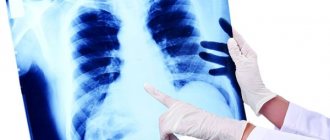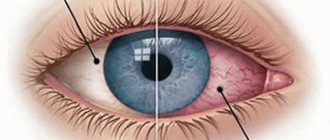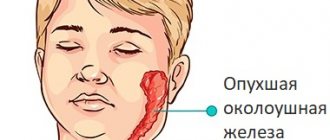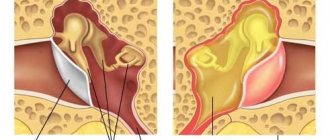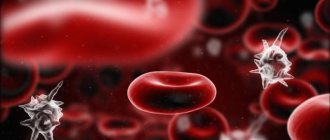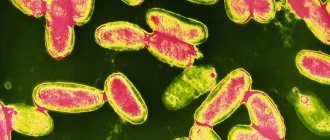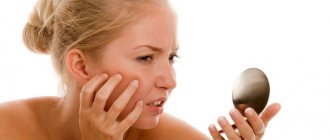What is cold allergy
Even doctors do not come to a consensus on the answer to the question “is there an allergy to cold?”, so many of them reject such a diagnosis, arguing that there is no allergen that causes a specific reaction in the body, and cold is a physical effect. However, when exposed to low temperatures, some people experience a release of histamine, which provokes allergic reactions - vasodilation, itching and redness of the skin or mucous membranes, and the development of edema. Cold allergy is a negative response of the body to an irritant in the form of low temperature.
How to treat cold urticaria
The method of treating this disease is similar to measures for treating a common allergic reaction. First of all, you need to get rid of the provocateur of the disease, which means try to eliminate the effects of cold.
In winter, those suffering from this disease are advised to wear clothes made from natural fabric, and in no case overcool. Everyone has their own threshold of sensitivity. Someone may feel unwell at a temperature of minus 25-28 degrees, while for others, hives begin at minus 10 degrees or even from hygiene procedures with cold water. If you do become hypothermic, you urgently need to take a warm bath or warm up in the shower.
Among the medications, it is worth recommending antihistamines. This could be Claritin, Tavegil or Suprastin. Keep in mind that some of them have a sleeping pill side effect, which is why they should not be taken if urgent concentration is needed, for example, when driving a car. In especially difficult situations, doctors prescribe blood cleansing.
It has been established that most often urticaria begins in an unhardened person suffering from a chronic disease (dental problems or kidney disease, stomach disease, bronchitis, sore throat). Therefore, pay attention to those problems in the body that bother you throughout your life.
Symptoms of an allergy to cold
This problem can manifest itself in any way, and the symptoms of an allergic reaction can follow each other or develop in isolation, forming one pathological process. In this case, the symptoms of an allergy to cold, as a rule, are complex and occur in a certain order. By tracking the timing of their manifestation, it is possible to distinguish cold urticaria from another disease with similar symptoms. The most common signs of pathology:
- Quincke's edema;
- bronchospasm;
- red skin rashes;
- anaphylaxis.
On hands
The manifestation of cold urticaria is not yet a fully understood pathological process. Doctors can only say that irritation on the hands from cold appears due to the body’s increased sensitivity to cryoglobulin (protein), which begins to transform when a person is exposed to low temperatures. As a result of this process, an allergic reaction occurs.
Cold hand allergies, which are common today, have a complex mechanism of development and manifestation that modern medicine cannot yet explain. Often the disease is disguised as dermatitis, so it is sometimes difficult for an ignorant person to distinguish between these pathologies. An allergy to cold begins to manifest itself with itching and flaking of the skin, after which rashes similar to hives begin to appear on the skin of the hands and the limbs swell.
In addition to hives, blisters may appear on the skin of the hands, the formation of which is accompanied by unpleasant sensations - increased itching and burning. Typically, cold allergies resemble burns. In some cases, the body reacts more seriously to an irritant - snow, frost, cold rain or wind - and the hands immediately become covered with swollen red blisters filled with a transparent substance. These symptoms become more pronounced after warming up (person’s contact with warm water or clothing). After half an hour or an hour, the skin becomes clean again.
- How do allergic reactions manifest in a child - symptoms, diagnosis and treatment
- Urticaria in children - causes and symptoms. Types, treatment and diet at home
- Affective-respiratory attacks in a child: causes and treatment
On the face
Mastocytes, cells that are found in the upper layers of the skin, are responsible for the appearance of skin allergic reactions. Cold is a strong irritant for them, so the cells react negatively to it, stimulating the occurrence of swelling, peeling of the skin, headaches, and chills. Cold allergies on the face appear with reduced immunity, but it can also be triggered by various chronic (rhinitis, sinusitis, sinusitis, etc.) and acute viral diseases.
A healthy body copes with the effects of cold, while a weakened one cannot prevent the development of unpleasant symptoms. At the same time, normally, after walking down the street in winter in the cold, redness of exposed skin occurs due to a rush of blood into the vessels, which first narrow under the influence of low temperature, and then expand in warmth. This reaction in a healthy person lasts no more than 40 minutes.
How does an allergy to cold manifest itself? In people with this type of allergic reaction, low temperature provokes:
- profuse lacrimation;
- sneezing/coughing;
- swelling of the tongue, larynx, lips, sinuses;
- the appearance of compactions and blisters;
- blue skin;
- headache;
- noise in ears;
- chills;
- dizziness;
- mild cramps;
- the appearance of pink or bright red spots.
On foot
Cold urticaria occurs in the lower extremities and has the appearance of a rash (more often the allergy affects the thighs and calf). Moreover, the disease is more often diagnosed in women, which is associated with wearing short skirts during cold periods of the year. An allergy to cold on the legs can only manifest itself after direct contact of the limbs with the allergen, and a reaction can be triggered by a temperature of +4 and below. Typically, symptoms of an allergic reaction on the feet are:
- pain, discomfort in the joints of the knees;
- dermatitis, which is accompanied by a small rash and peeling;
- small blisters on the skin of a pink-red color;
- chills, low-grade fever (rare).
Diagnostics
The pathology is often confused with dermatitis, colds, and respiratory viral infections, because when a person is weakened by vitamin deficiency, dysbiosis, or other diseases, including dermatitis, allergic, vascular and infectious pathologies, cold allergies are always more severe and with frequent exacerbations.
In the case of a typical form of cold allergy, the disease is diagnosed by performing a provocative test (Duncan test).
To do this, apply an ice cube to the skin of the forearm on the inside for 3–4 minutes, observing the reaction. Ice must be placed in a thin plastic bag so that there is no direct contact with the skin to avoid misdiagnosis in case of a positive test. This can happen if the patient does not have a cold allergy, but aquagenic urticaria (allergy to water).
After 10 minutes, the result of the Duncan test is assessed as positive if a dense bubble, erythema, itching, burning, and sometimes a pinpoint rash appear at the site of ice application.
People with abnormal cold intolerance may develop skin symptoms within 30 seconds, while others experience a reaction within 20 to 30 minutes. In patients whose body responds only to a decrease in the temperature of the whole body, or with a hereditary form and atypical development of the pathology, local signs may not appear at all.
If a provocative test is suspected of being unreliable, a blood test must be performed to confirm the diagnosis.
If the Duncan test shows nothing, but the patient later develops characteristic symptoms, then the diagnosis is confirmed by detecting cold antibodies (agglutinins), cryoglobulins, cryofibrinogen, and sometimes paroxysmal hemoglobinuria in the plasma.
Familial cold syndrome (as opposed to the typical form) is characterized by an increased ESR (erythrocyte sedimentation rate) and an increased concentration of C-reactive protein.
Today, competent doctors do not use other types of tests for diagnosis in the form of keeping the patient naked for 10 - 15 minutes in a room at + 4C or immersing hands up to the elbows in cold water, since there is a high risk of a systemic reaction with the development of severe general body symptoms.
Causes of cold allergies
Experts say that allergies to snow and frost are not an independent disease, but only a symptom of a somatic pathology. The likelihood of developing cold urticaria increases when another illness, characterized by a long duration, can greatly weaken the human body. In this case, cryoglobulin serves as a stimulator of the allergic reaction, and low temperature serves as the trigger.
The causes of cold allergies are numerous - from colds and infectious diseases, to chronic forms of pathologies, parasitic infestation and vitamin deficiency, which leads to weakened immunity. Doctors name the following factors that can cause a pathological skin reaction to cold:
- drinking very chilled drinks or food;
- direct contact with cold water (when swimming in ponds in winter, while cleaning, etc.);
- a person leaving a warm room into a windy/cold environment.
- Fungus Alternaria alternata - routes of infection, signs, symptoms and treatment methods
- Dermatitis on the legs of a child or adult - types, symptoms and treatment
- How to treat urticaria in adults and children. Folk remedies and medicines for treating urticaria at home
Causes of cold type allergies
In people who are sensitive to temperature changes and suffer from cold allergies, frosty air causes an effect on mast cells.
These cells are located on the surface of the skin. They give a signal, and a reaction occurs, accompanied by the release of histamine. The body, experiencing an excess of the above-mentioned hormone, responds with an allergic reaction.
People who are sensitive to weather changes should think about what the body’s reaction to a drop in ambient temperature is and what treatment is required.
There is a high probability that a disease is hidden in some part of the body, the development of which a person may not be aware of.
Eliminating the symptoms of a cold reaction is not enough. It is recommended to get rid of the root cause of the disease.
The main causes of cold-type allergies that can lead to complications are the following factors:
- chronic pathologies that a person has suffered from for a long time: sinusitis, sinusitis, caries or tonsillitis;
- disruptions in the functioning of the endocrine system;
- weakening of the immune system is often provoked by the presence of helminths in the human body;
- kidney pathologies, diseases of the gastrointestinal tract, liver and other organs;
- colds, stress and cancer;
- hereditary predisposition;
- infectious diseases, which include: chickenpox, mumps and pneumonia;
- existing problems with an allergic reaction to external irritants: dust, animal hair or pollen;
- long-term use of medications belonging to the category of antibiotics.
Article on the topic: Allergic dermatitis code according to ICD 10
Rarely, there are precedents in which the above-mentioned type of allergic cold reaction is genetically predisposed. Intolerance to the cold form of allergy sometimes manifests itself in children if one of the parents had similar problems.
The most common type of cold allergy does not occur from cold, but is provoked by windy weather. Its main symptom is not itching, but burning of the skin.
Based on the above factors, it becomes clear that many people are at risk. Therefore, the possibility of acquiring a cold type of allergy cannot be ruled out. Such symptoms require treatment.
Predisposing factors for allergies are sometimes trivial changes in temperature conditions. For example, a person moves from one room to another or goes outside.
The release of histamine can be triggered by contact with supercooled water. This situation can occur when leaving the pool or while swimming in open water. Some people have trouble washing dirty dishes every day.
Types of cold allergies
The skin's reaction to cold is not fully understood, however, experts who study this phenomenon divide it into several different types. What types of cold allergies are there? There are two main types of pathological reactions:
- hereditary/familial (passes in an autosomal dominant manner from parent to child and manifests itself at an early age);
- acquired.
There are other classifications of cold urticaria. So, experts highlight:
- local allergy to cold (appearing in a certain limited area of the body);
- with delayed and immediate reaction to a stimulus;
- systemic urticaria (severe pathological reaction of a generalized type).
Prevention measures
To prevent cold allergies from affecting your hands under the influence of development factors, you must adhere to the following preventive measures:
- During the cold season, special attention should be paid to nutrition and hydration of the skin. For these purposes, it is better to use pharmaceutical cosmetics that are approved by dermatologists and have a gentle composition. You should not go outside immediately after applying hand cream. At least a quarter of an hour should pass.
- Do not walk in frost, rain or snow with unprotected hands. You need to love such an accessory as gloves and mittens.
- Avoid hypothermia. But if you need to be outside for quite a long time, then you need to have a thermos with hot tea with you or go to a coffee shop for a while to drink a hot drink.
- Review your eating habits. If there is no accompanying allergy, then enrich your diet with nuts, fatty fish, and vegetable oils.
- In the summer, begin to harden the body, gradually reducing the water temperature.
Hands come into contact with various irritants more often than other organs, so it is necessary to especially carefully protect them from contact with possible allergens. And if primary symptoms of an allergy appear, you should not delay a visit to an allergist. Timely diagnosis and timely initiation of therapy is the key to a favorable prognosis and improved quality of life even in the cold season.
Treatment of allergies to cold
You should not choose therapeutic measures to combat allergies on your own. If characteristic symptoms occur, contact a specialist who, taking into account the test results, will determine the original source of the disease and recommend adequate therapy. Treatment of allergies to cold is complicated by the specificity of the allergen - it is impossible to always avoid it. Patients with cold urticaria are treated symptomatically with antihistamines.
Cold allergy ointment
For mild symptoms of the disease, external agents are used - creams and ointments. You can buy them at any pharmacy, the main thing is to check the composition of the drugs, giving preference to those made from hypoallergenic raw materials. The ointment for cold allergies produces an effect after only a day of use, and the unpleasant symptoms of the pathology gradually disappear (burning sensation, peeling, itching, redness, etc.). Doctors recommend paying attention to the following remedies for cold urticaria:
- Skin cap;
- Gistan N;
- Panthenol cream or spray;
- D-Panthenol;
- La-Cri (can be used after the rash disappears to prevent their reappearance).
Cold allergy medications
To be able to breathe freely and not suffer from such manifestations of cold allergies as red rashes on the skin, itching and peeling, adults should take antihistamines during periods of exacerbations. Thanks to their action, you can quickly eliminate the unpleasant manifestations of an allergic reaction. Popular, effective medications for cold allergies that you can take when the first signs of the disease appear are:
- Suprastin;
- Tavegil;
- Claritin;
- Fenistil;
- Levocetirizine;
- Parlazin;
- Zyrtec.
Reasons for appearance
Cold allergy was not recognized as an independent disease for a long time, but today experts are actively diagnosing it.
It rarely develops in completely healthy people , but affects patients with low immunity. There are also provoking factors that contribute to the formation of this disease:
- General decrease in immunity;
- Previous serious lung diseases (bronchitis, pneumonia, tuberculosis);
- Problems with the thyroid gland;
- The presence of parasites in the body (helminths, pinworms and others);
- Having allergies to food and other irritants;
- Malfunctions of the gastrointestinal tract;
- Chronic diseases of the liver, kidneys and other organs;
- Hereditary predisposition;
- Weak stress resistance.
If a person has good resistance to external irritants, cold allergies avoid him. After infectious diseases or in the presence of chronic pathologies, the body experiences excessive stress .
Against this background, resistance drops, and cold is perceived as an irritating factor . Long-term treatment with antibiotics, which is often accompanied by dysbacteriosis, affects general well-being in the same way.
In children, even the presence of pinworms or helminths can cause the disease, although the manifestation of allergies in such cases is characterized by maximum ease.
Hereditary predisposition to cold allergies deserves special attention. It can easily be confused with other diseases, which makes diagnosis very difficult.
Signs do not appear immediately after contact with cold or wind, but after half an hour or even several hours. Symptoms are characterized by maximum severity and rapidity of increase.
It all starts with a small rash and severe itching, and it can all end with Quincke's edema. Because of this, if a red rash occurs on the face, you should definitely contact a specialist to receive qualified treatment.
Treatment of allergies to cold with folk remedies
Alternative medicines can be used together with antihistamines to reduce the intensity of the allergic reaction. Treatment of cold allergies may include the use of vegetable and herbal juices, tinctures, decoctions, rubs, compresses, and ointments. Badger fat is often used to treat cold urticaria, which effectively eliminates the unpleasant symptoms of the disease. Treatment of allergies to cold with folk remedies can be carried out using the following recipes:
- Herbal collection against cold urticaria. It is necessary to combine violet flowers, burdock roots and walnut leaves in equal proportions. Then pour 2 tbsp. l. mixture with boiling water (1 tbsp.), leave for an hour, then strain. The daily dose of the allergy medicine should be drunk 3 times.
- Celery juice. Prepare a fresh drink from the root of the plant and take it three times a day, ½ tsp. before meals.
- Tincture of pine bud oil against cold allergies. Pour young pine shoots (50 g) with the same amount of vegetable oil and leave the mixture for 5 months. Rub the resulting product easily into the rash areas 1-2 times a day.
- Pine baths. Pine branches need to be boiled in water and then poured into a filled bath. The remedy will help eliminate the symptoms of cold urticaria if taken daily.
- Oil tincture of herbs against allergies. Mix equal amounts of burdock roots, calendula flowers, celandine herb, and mint leaves. Pour 10 g of the product with oil in a 1:2 ratio and leave for a day. Keep the tincture in a water bath for 10 minutes, stirring the contents of the container. From the moment the product is ready, use it 3-4 times a day. After about 5-7 days, the skin will look better.
Means for prevention
If you have not yet encountered manifestations of this disease, try to use methods to prevent it. Before going outside in winter, apply protective creams . A good nourishing cream will help if you lubricate your face with it 30 minutes before you need to go out into the cold.
Under no circumstances should you give up hats , scarves , gloves , tights and insulated underwear . Moreover, the latter must necessarily be cotton, since synthetic and woolen fabrics can aggravate the symptoms of urticaria.
If you notice the first signs of an allergic reaction to cold, go into a warm place to avoid hypothermia. Temper the body with douches, but you need to start such activities in the warm season, and lower the water temperature not sharply, but always gradually.
Before going out, do not wash your skin with soap, as it destroys the natural protective film and the skin becomes more susceptible to irritants.
Prevention of cold allergies
People who have experienced this pathological reaction at least once must constantly follow preventive measures, since allergic diseases are chronic and tend to recur. Prevention of cold allergies implies compliance with the following rules:
- before going out into the cold, you should try to cover as many unprotected areas of your skin as possible with clothes (be sure to wear mittens or gloves, a scarf, a hat);
- use rich cream for face, hands, lip balm;
- pay careful attention to the choice of warm clothes - prefer models made from natural materials;
- use rubber gloves when cleaning;
- wear outerwear with a hood - it will protect you from the winds.
Reasons for development
Doctors call cold allergies “cold urticaria” and divide them into four types:
- Primary or idiopathic. It occurs as an independent pathology, that is, without any particular reason.
- Secondary. It develops against the background of a number of diseases, including infectious and oncological diseases, insect bites, and taking medications.
- Family. It is diagnosed at an early age because it is inherited. This type is very rare.
- Reflex. A special type of pathology in which external symptoms are localized in areas adjacent to those affected by cold.
Cold allergy is a pseudo-allergic reaction of the body, since cold cannot act as an allergen. However, frost and wind serve as mediators of a pathological process in which epidermal cells release large amounts of histamine (a substance responsible for allergy symptoms).
Doctors say that pseudo-allergy more often affects people with weak immunity, those exposed to stress, and those suffering from intestinal dysbiosis. But the phenomenon is completely unpredictable, and sometimes occurs in an absolutely healthy person. At the same time, not only frost or wind can provoke the development of a clinical picture. The factors leading to the pathological phenomenon are called:
- working air conditioner (sharp temperature drop occurs);
- cold water in a pool or pond;
- ice drinks and ice cream.
Characteristics of the disease
In fact, this is not a true allergy, since there is no allergen that causes such a reaction. It occurs under the influence of a physical factor - low temperature. But since its symptoms are similar to allergies, that’s why they called the disease that way. What are its features? Some time after the onset of exposure to low temperatures, a small pale rash appears on exposed areas of the body. It begins to itch, often these places are painful and red.
Mostly, cold allergies affect the hands, face, and sometimes the inner thighs. But this reaction can spread throughout the body. If your lips are sensitive to low temperatures, then after drinking ice-cold drinks or being exposed to wind and frost, rashes appear on them, and cracks appear in the corners. Cold can also cause internal reactions throughout the body, similar to a cold, migraine, or even an upset stomach. Cold allergies on your hands can occur after washing them with ice water. The reaction on the face appears not only from wind and frosty air, but also when eating cold food.
How to diagnose the disease
It is very difficult to distinguish allergic reactions from a common cold or migraine. One of the hallmark signs of allergies is itching in the nose, ears and eyes. In addition, a runny nose and malaise quickly disappear after exposure to heat. How can you diagnose the disease at home? A piece of ice from the freezer will help do this. You need to apply it to your wrist for 5-10 minutes. If a rash, itching or swelling appears after this, it means the patient has a cold allergy. Sometimes the presence of the disease is checked by placing a person in a room with a low temperature for half an hour. But symptoms do not always appear with such tests. In complex cases, medical diagnosis and special blood tests may be required.
What it is
An allergy to cold is a reaction that appears on exposed areas of the body and resembles a rash like hives.
Symptoms of the pathology appear within a few minutes after exposure to low temperatures on exposed areas of the body.
Despite the fact that this disease is called an allergy, in reality this response of the body has nothing to do with the true reaction.
Frost and dampness are nothing more than physical factors, while the immune reaction is provoked by sensitizing substances.
Cold allergies are the result of abnormalities in the body's defenses.
The appearance of symptoms of this disease may be associated with the presence of chronic pathologies.
The reasons for this allergy may include the following:
- genetic predisposition;
- helminthic infestation;
- taking antibacterial drugs;
- chronic infections;
- pathologies of the digestive system;
- liver and pancreas diseases;
- stressful situations;
- intoxication of the body;
- formation of immune complexes from antibodies.
There are many types and forms of cold allergies. So, this disease can be acute or chronic.
Symptoms of exacerbation of the disease are the appearance of blisters and itching sensations in exposed areas of the body.
Sometimes pain occurs in the muscle tissue and body temperature increases.
In addition, the following varieties are distinguished:
- cold dermatitis – provokes redness of the skin, peeling and itching. Extensive swelling often occurs;
- pseudo-allergic cold runny nose - accompanied by discharge of fluid from the nose, frequent sneezing, general weakness and headaches;
- pseudoallergic conjunctivitis - characterized by burning in the eyes, the appearance of lacrimation.
- cold asthma is the most dangerous type of allergy, which is accompanied by attacks of suffocation and severe shortness of breath;
- reflex cold urticaria - occurs exclusively when the whole body is cooled. Local symptoms include the appearance of rashes that are localized in the area of the cooled area of the skin;
- familial urticaria - appears quite rarely and is characterized by autosomal dominant inheritance. In this case, maculopapular rashes and burning appear. Sometimes there are systemic manifestations, pain in the joints, chills;
- cold erythema - characterized by severe redness of the skin and severe soreness in certain areas of the body.
Photo: Cold dermatitis
How does the reaction manifest itself?
Cold allergy symptoms can vary in severity, from mild symptoms that will disappear after a short time to widespread, recurring lesions. All people experience some discomfort when suddenly changing from warm to cold, which is completely normal. A common occurrence is redness in areas of the skin that are not protected by clothing. But these consequences disappear in a maximum of half an hour. In the case of intolerance, the symptoms do not go away as quickly and appear more actively.
Typical symptoms:
- swelling, redness, itching of the skin. Peeling often begins. Cold allergies on the face usually manifest as redness in the cheeks, chin, and nasolabial folds;
- rashes of a dense structure on the face, arms, legs, thighs, knees. Color - from pale pink to red. Most often they disappear a couple of hours after the person is warm. A rash may also appear on the lips;
- blisters, lumps, bruises;
- sneezing, runny nose, difficulty breathing when a person is in the cold. In warmth, these signs disappear;
- cold asthma - laryngeal edema, bronchospasm, shortness of breath, cough. More often diagnosed in patients who have a predisposition to asthmatic diseases and pneumonia;
- conjunctivitis - severe lacrimation, redness of the eyes, swelling of the eyelids, a feeling of pain in the eyes, increased sensitivity to bright light. It differs from the typical reaction to cold in pain and duration of manifestation;
- weakness, nausea, chills, headache. If a person is warm, these phenomena disappear;
- Cold allergies on the hands are manifested by itching, cracks, and rashes.
If you are exposed to the cold for a long time, Quincke's edema and anaphylactic shock are possible. Urgent medical care is necessary, as such conditions are life-threatening.
First aid
How to get rid of cold allergies on the face? If you experience recurring symptoms of cold allergies, do not delay contacting an allergist. He will do an ice test and monitor your skin's reaction.
Self-help for allergies to cold consists of immediately returning to a warm room, reducing the time spent outside in frosty weather, wearing a warm scarf, hood or other headgear that covers the face well.
It won’t hurt to apply ultraviolet cream half an hour before leaving the house. Increase your consumption of fish and vegetable oils, which contain omega-3 fatty acids.
Treatment of the disease
Like any other disease, a reaction to cold should be treated by a doctor. After all, this condition signals that the patient has a reduced immune system or has serious chronic diseases. Therefore, you need to start with strengthening the body’s defenses and getting rid of major diseases. And the treatment of cold allergies itself consists of relieving symptoms. To do this, use well-known antihistamines, for example, Tavegil, Suprastin, Claritin tablets or others that the doctor recommends. You can also use antiallergic nasal drops or ointments. In addition, you need to use any means of official and traditional medicine to strengthen the immune system. There is also a more modern and complex way. Treatment of cold allergies is sometimes carried out using autolymphocytotherapy. It consists of injecting the patient with lymphocytes isolated from his own blood.
Signs of the disease
Often the symptoms of the body's reaction to cold are similar to food, contact or drug allergies. But they appear only during the cold period . These include:
- rashes on the face in the form of small blisters or scaly red spots;
- severe itching of the face, which may stop in a warm room;
- transformation of redness into painful scabs;
- sometimes swelling of the face;
- swelling of the upper eyelids and itching as with conjunctivitis, sometimes with discharge of pus;
- tearing and pain in the eyes on the street, which stops indoors;
- repeated sneezing in the cold;
- severe runny nose outdoors, not noticeable in any way indoors.
Only a dermatologist .
He will refer the patient to an immunologist, endocrinologist and other specialists, and will also offer to take tests to identify allergens, and, based on all the studies, will make a diagnosis and prescribe treatment .
